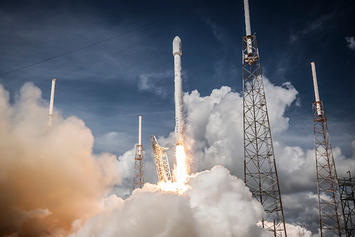
Wherever profit leads us,
to every sea and shore
For love of gain the wide
world’s harbors we explore.
— Dutch poet Joost van den Vondel (1587–1679)
Once Westerners were explorers — daredevils driven by greed, faith, and curiosity to (as they used to say on the original Star Trek) “seek out new life and new civilizations.” In what the historian J. H. Parry called the “Age of Reconnaissance,” Europeans and their descendants were animated with a “fierce competitive pugnacity” out of which the modern world emerged.
Today’s “innovators” in social-media firms, with their cult of surveillance, may seem pale in comparison, but we see the outlines of a new, more breathtaking technological future beyond the cyberspace mind swamp and out to the solar system and beyond. The builders of this new era — egotists and inveterate schemers such as Elon Musk, Jeff Bezos, and Richard Branson — are creating something more than better ways to silence dissent or post cat videos. They are creating a new world that, if we do not get to experience it, may shape the reality of our children and grandchildren.
This new Age of Reconnaissance involves more than just a handful of over-rich moguls. They are part of a vast entrepreneurial surge that includes more than 50 players engaged in everything from launch facilities and launch-service provision to reusable-rocket production and moon and Mars landers and vehicles. This is no minor niche market. Boosted by a huge surge of investment, space-industry global revenues are up more than twofold since the early 2000s, from $175 billion in 2005 to almost $424 billion in 2019. By 2040, Morgan Stanley projects, space-industry annual revenues globally should reach $1.2 trillion.
The first Age of Reconnaissance started in the 1300s, ultimately redrawing the map of the world and creating the first global economy. Its buccaneers were often flawed, with motivations that were complex and even contradictory. As Bernal Díaz, a soldier with Cortés, explained, they came “to serve God and His Majesty, to give light to those who were in darkness, and to grow rich, as all men desire to do.”
The great outward push began with the Italian city-states of the Renaissance and spread to other parts of Europe. Many were poor but resource-rich city-states such as Venice, and, later, nations such as Portugal that had few resources and were dependent on trade. Between 1000 and 1800 the greatest success was generally secured by those who perfected maritime technology, starting with the Vikings, the Venetians, and the Genoese, then spreading north to the Baltic Hansa, and then to the Netherlands and England. Many of these earlier explorers were privately financed, and some, such as Sir Francis Drake, were openly piratical. The great ocean adventures also led to great technological advances, such as extremely precise clocks that were used to calculate longitude.
Other early exploration missions were largely government-funded, and the rewards from those missions were owned by sovereign governments. With Christopher Columbus’s success in landing in the Americas (1492) and Vasco da Gama’s navigation around the Cape of Good Hope to India (1497), interest in fielding missions of exploration grew dramatically in the 1490s and early 1500s. While no one knew the precise nature of the treasure awaiting them, the anticipation of untold new wealth was a hot topic of conversation in royal courts and merchant houses throughout Europe.
As is true today, there were many skeptics of the whole enterprise. As one 16th-century Italian historian suggested: “What need have we of what is found everywhere in Europe?” Indeed, the cost of exploration was very high, as were the risks associated with success; crews suffered from disease and many ships were lost. Governments also needed money to fund other initiatives, such as wars based on religion or for territorial domination. The solution to this problem — in monarchies as well as the Dutch Republic — was to establish the “joint-stock company,” a new form of enterprise in which risks and rewards were spread across a large base of investors.
Read the rest of this piece at National Review
Joel Kotkin is the author of The Coming of Neo-Feudalism: A Warning to the Global Middle Class. He is the Presidential Fellow in Urban Futures at Chapman University and Executive Director for Urban Reform Institute. Learn more at joelkotkin.com and follow him on Twitter @joelkotkin.
Marshall Toplansky is a clinical assistant professor of management science at the Argyros School of Business and Economics at Chapman University. He is a research fellow at the university’s Hoag Center for Real Estate and Finance and at the Center for Demographics and Policy.
Photo credit: SpaceX via Flickr under CC 2.0 License.












